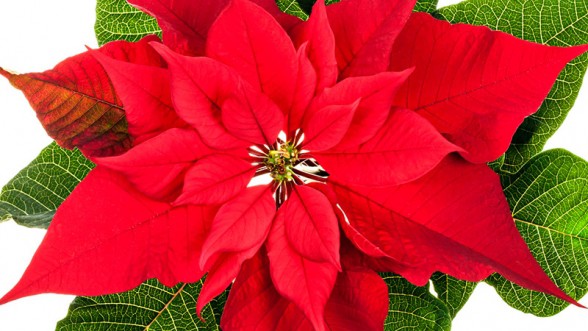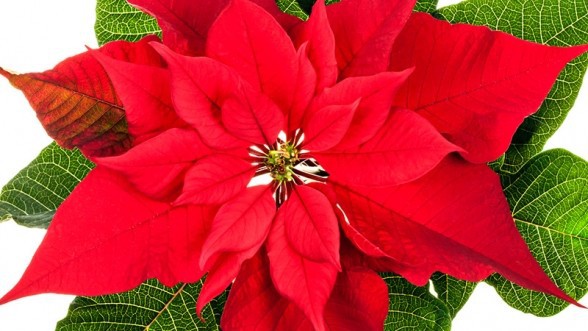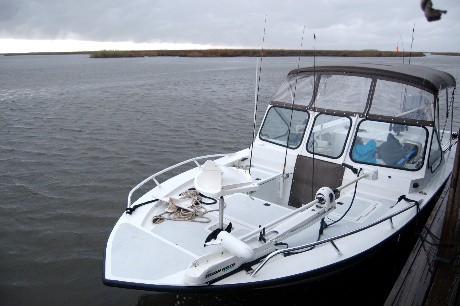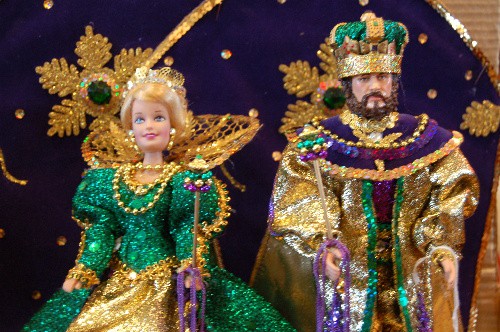Happy New Year & Pointsettias
2016 has arrived down the bayou in all its rainy glory. Finally, a little cold weather, which would be much more appreciated if it had come without the rain and the warnings of impending floods.
So, while you’re all cuddled up, your cabbage and black-eyed peas consumed, ready to bring you good luck and fortune, take a moment to read this piece I wrote for Country Roads Magazine for their December issue. I know you’re taking down the tree and garland, but hold up a minute. Before you discard that beautiful Poinsettia, have a gander at how you can keep the holiday spirit alive a while longer.
My goal for 2016 (besides being busy with my excursions) is to get
O R G A N I Z E D.
Happy New Year, friends!
BW
Poinsettias originated in Mexico, having been introduced to Louisiana in the mid 1820s by the U.S. ambassador to Mexico, Joel Poinsett. With leaves that turn brilliant red as the days grow shorter, poinsettias quickly became a holiday tradition in America.
I, for one, can never refuse a poinsettia. Their unique wintertime crimson leaves remind of me of Christmases past shared with family and friends. Long after the last morsel of holiday food is eaten and there’s nothing left but crumbs in the Christmas-goodie tin, a well-cared-for poinsettia provides a beautiful reminder of the season. There are just a few easy tips to take into consideration.
First, choose a high-quality plant. Look for plants with six or more of the red leaves, called bracts. Then, check to see that the lower green leaves extend well beyond the edge of the pot, indicating a healthy specimen. Cyathia, the green flowered parts in the center of the bracts, indicate the age of the plant and the length of time it has been sitting on the shelf; look for cyathia that are not yet full of pollen and sap.
Once you’ve chosen the perfect poinsettia and taken it home, place it where it will receive some direct sunlight during the day. Remember that these plants were grown in a greenhouse and are accustomed to temperatures between 70 and 75 degrees during the day and around 65 degrees at night. Mimicking those temperatures indoors increases longevity. Placing the poinsettias in a clay saucer filled with rocks and a little water provides the humidity that these plants love. Make certain that the water level does not touch the bottom of the plant so that the roots don’t rot.
With proper care, your plant should thrive until January, at which time the leaves will begin to fade and drop off. Never fear. Just place the pot in a warm place in the house and allow the soil to dry out; the plant will slowly go dormant. Sometime in March or April, repot the plant, cut the stems back to about four inches above the soil, and move the plant outdoors. In South Louisiana, where mild winters offer the perfect habitat, you may incorporate the plant into your landscape. (Whether you place the plant outside in its pot or plant it in the landscape, choose a southern exposure so that the plant is protected from the north wind and hard freezes. The plants can withstand temperatures as low as 40 degrees, but the lower stems and roots require protection during freezing temperatures in order to ensure re-growth.) Within just a few short weeks, new growth will occur; when the new leaves have grown to four to six inches in length, pinch the terminal ends of each stem to encourage lateral branching, which keeps the plant short. No more pruning is necessary past September 1.
In order for the plant’s green leaves to turn that beautiful ruby-red color, poinsettias require fourteen hours of continued darkness each night between September 15 and October 1. This darkness forces the plant to “flower” in time for the holiday season. Whether you’ve placed your plant in a pot or in the landscape, cover the plant with a dark, lightweight sheet, making sure to shield the plant from any type of artificial light like headlights, floodlights, or porch lights. By mid-November, your poinsettia will be ready to grace your holiday table or to be the center of attention in your holiday landscape.
Possumhaws for Christmas
 Down in Bayou Country, December used to mark the height of fur-trapping season. Entire families boarded traditional camp boats to spend the winter trapping otter, nutria, mink, and muskrat in the coastal marshes. No commercial Christmas trees graced these cramped living spaces; the families instead relied on Mother Nature for their holiday decor. Abundant in the wetlands of South Louisiana, native possumhaw trees, Ilex decidua, provided a suitable replacement for the traditional holiday evergreens. Trappers cut branches from the possumhaw trees and placed them in a jar of water in the corner of the room or on a table, the bright red berries standing stark against the grey of the weathering cypress-plank walls. On Christmas Eve, the children each placed an empty sock beneath the tree branches and woke Christmas morning to socks bulging with an orange, a red apple, and hard candies. Today, the crimson berries of the wild possumhaw serve as a reminder of simpler times, when the branches of a wild tree provided holiday cheer to hard-working fur trappers. Photo by Wendy Wilson Billiot.
Down in Bayou Country, December used to mark the height of fur-trapping season. Entire families boarded traditional camp boats to spend the winter trapping otter, nutria, mink, and muskrat in the coastal marshes. No commercial Christmas trees graced these cramped living spaces; the families instead relied on Mother Nature for their holiday decor. Abundant in the wetlands of South Louisiana, native possumhaw trees, Ilex decidua, provided a suitable replacement for the traditional holiday evergreens. Trappers cut branches from the possumhaw trees and placed them in a jar of water in the corner of the room or on a table, the bright red berries standing stark against the grey of the weathering cypress-plank walls. On Christmas Eve, the children each placed an empty sock beneath the tree branches and woke Christmas morning to socks bulging with an orange, a red apple, and hard candies. Today, the crimson berries of the wild possumhaw serve as a reminder of simpler times, when the branches of a wild tree provided holiday cheer to hard-working fur trappers. Photo by Wendy Wilson Billiot.
Wendy Wilson Billiot is a freelance writer and owner of Beyond the Bayou Excursions.
She can be reached via her website bayouwoman.com.







Possum haw. Never heard the name, but I have seen the berries before. Now That I have a name for them, I will do a bit of research. I’m wondering if they are dibble for human, birds, or deer.
Hope Y’all had a great day. I made sure to eat a nice sized portion of Blk eyed peas and cabbage. Lol! I also had a sm piece of King cake.
King Cake? Already? You didn’t even wait for Epiphany! Yes, mammals and birds do eat the berries, but don’t let me keep you from your research. You will come across another plant with this common name that looks nothing like this and does not have anywhere near the same botanical name. Other common names for this are “swamp holly”, winterberry, etc. Interesting plant and beautiful against the stark winter landscape. I ate cabbage and peas twice yesterday and will probably eat them again today for an extra measure of good fortune and luck. Does it work that way? (big smile)!!!
Well, after all this time, I finally solved a little mystery. It wasn’t really a mystery, because I thought I knew what I was talking about. But, I didn’t. I’ve always believed and said we had poinsettias in Liberia. But, your article, and a few others made clear that they don’t grow in Liberia. So, the question was, what was that plant all around my house? I found out that it’s called Mussaenda, and that it very closely resembles poinsettia. So that answers that!
Just as a note — poinsettias aren’t poisonous to cats and dogs, even though many people believe they are. However, the are mildly toxic, and can lead to problems. I don’t buy them for just that reason. I’d rather skip the poinsettia and skip the unpleasant symptoms that could come if Dixie got into them (which she probably would).
When I still was messing with them, I had some poinsettias that I kept for about four years, and they will naturaalize here. They’re such pretty plants, and even in Houston, on the south side of a house, they’ll do well.
Happy New Year, by the way. We’re only to January 2, and I’m already behind!
If the sun ever were to come out again, I might go for a walk and try and track down some possomhaw. It’s one of my favorite plants
I just read your follow-up comment to my comment on your previous blog post pertaining to Christmas wherein you mention Poinsettias in Liberia as tall as the house. Whew, glad that mystery is now solved. I didn’t know they weren’t poisonous to cats and dogs, so that gives one a better feeling about planting them in the landscape, although I see why you would choose not to tempt Dixie! I hope you track down some possumhaw and use that new camera to get a brilliant shot of their bright red berries against the drab winter branches and sky. Happy New Year, friend!
Mom used to trek into the woods and down the creek line at nanas’ and bring back a bag of beautiful, wild plants and leaves for my neighbor who made beautiful wreaths and bouquets for Christmas gifts. In return, mom got to pick up the pecans at her house. Possum Haw was one of the items. I thought it was gorgeous.
And my mother in law planted her Christmas poinsettias outside each year. They grew really well and came back each year.
How about that? You had something in common with both topics of the article!! Way over there in TX. I’m sorry to hear that your mother needs more help these days, but you need to take care of yourself, also. So, I will keep you and her in my prayers, and let the good Lord take care of the rest. Wishing you a better year this year, Cammy.
Now I know,thank you Wendy as I have a few I have kept over the years,the oldest is 5 years old and made very pretty red leaves again this year but is growing more like a tree. I will prune it back this year.
I’m sure that down in Florida you easily keep these from year to yer and in the landscape!
Hope you are well and that you have a blessed 2016, Ronnie!